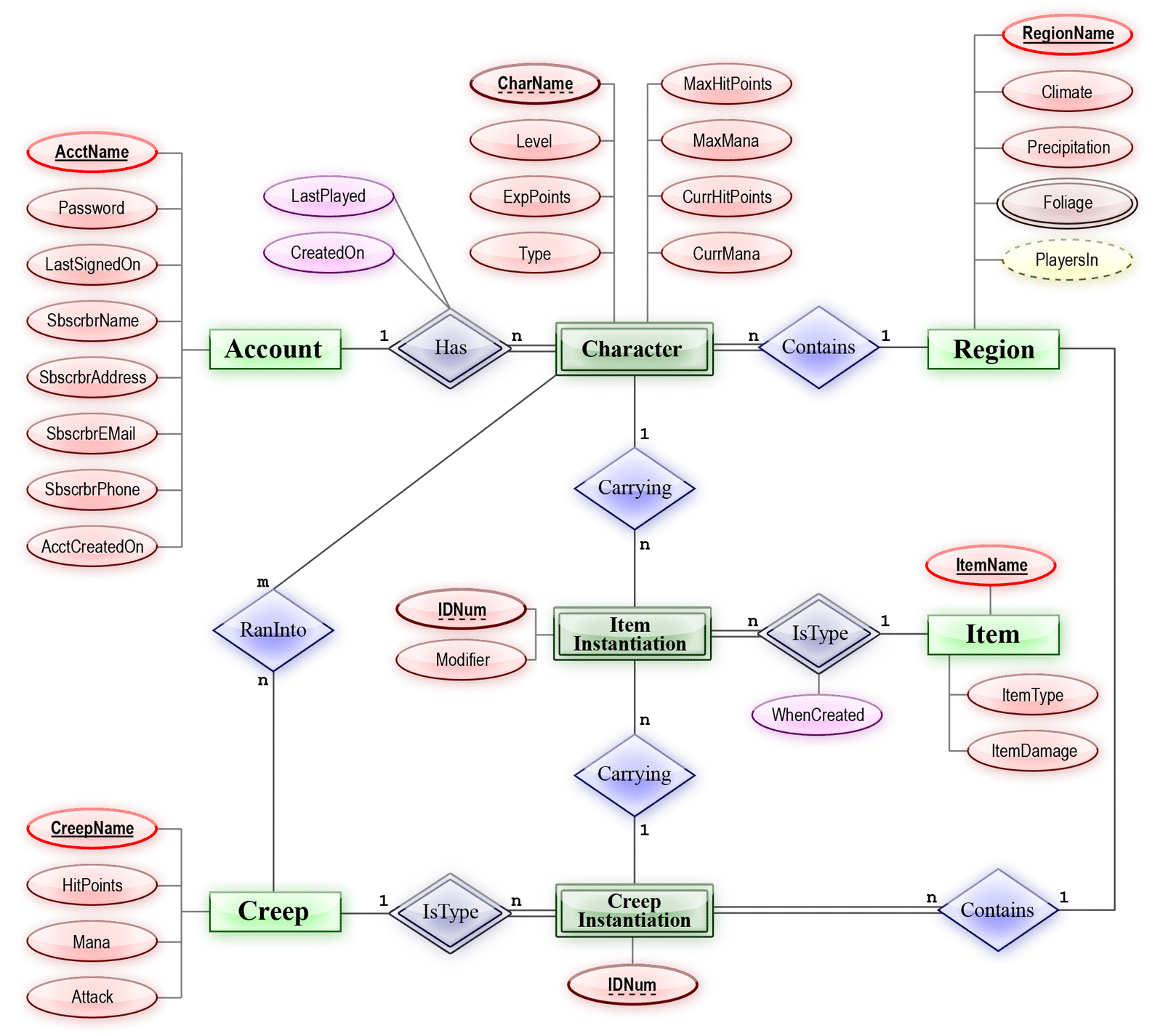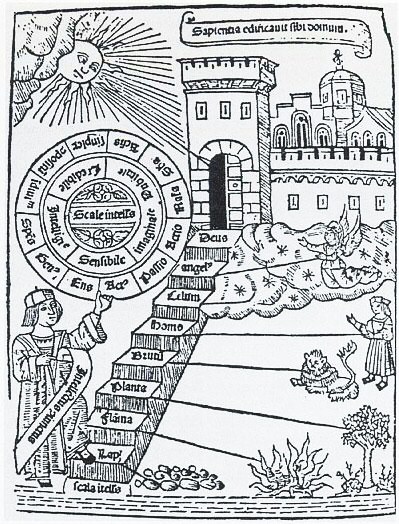|
Is-a
In knowledge representation, ontology components and ontology engineering, including for object-oriented programming and design, is-a (also written as is_a or is a) is a subsumptive relationship between abstractions (e.g., types, classes), wherein one class ''A'' is a subclass of another class ''B'' (and so ''B'' is a superclass of ''A''). In other words, type A is a subtype of type B when A's specification implies B's specification. That is, any object (or class) that satisfies A's specification also satisfies B's specification, because B's specification is weaker. For example, a cat 'is a animal, but not vice versa. All cats are animals, but not all animals are cats. Behaviour that is relevant to all animals is defined on an animal class, whereas behaviour that is relevant only for cats is defined in a cat class. By defining the cat class as 'extending' the animal class, all cats 'inherit' the behaviour defined for animals, without the need to explicitly code that behavi ... [...More Info...] [...Related Items...] OR: [Wikipedia] [Google] [Baidu] |
Ontology Components
Contemporary Ontology (information science), ontologies share many structural similarities, regardless of the ontology language in which they are expressed. Most ontologies describe individuals (instances), classes (concepts), attributes, and relations. List Common components of ontologies include: ;Individuals: instances or objects (the basic or "ground level" objects; the type–token distinction, tokens). ;Class (set theory), Classes: set (computer science), sets, collections, concepts, type–token distinction, types of objects, or kinds of things.See Class (set theory), Class (computer science), and Class (philosophy), each of which is relevant but not identical to the notion of a "class" here. ;Attribute (knowledge representation), Attributes: aspects, properties, features, characteristics, or parameters that individuals (and classes and relations) can have. ;Relation (mathematics), Relations: ways in which classes and individuals can be related to one another. Relations c ... [...More Info...] [...Related Items...] OR: [Wikipedia] [Google] [Baidu] |
Inheritance (object-oriented Programming)
In object-oriented programming, inheritance is the mechanism of basing an Object (computer science), object or Class (computer programming), class upon another object (Prototype-based programming, prototype-based inheritance) or class (Class-based programming, class-based inheritance), retaining similar implementation. Also defined as deriving new classes (#Subclasses and superclasses, sub classes) from existing ones such as super class or Fragile base class, base class and then forming them into a hierarchy of classes. In most class-based object-oriented languages like C++, an object created through inheritance, a "child object", acquires all the properties and behaviors of the "parent object", with the exception of: Constructor (object-oriented programming), constructors, destructors, operator overloading, overloaded operators and friend functions of the base class. Inheritance allows programmers to create classes that are built upon existing classes, to specify a new implementat ... [...More Info...] [...Related Items...] OR: [Wikipedia] [Google] [Baidu] |
Has-a
In database design, object-oriented programming and Object-oriented design, design, has-a (has_a or has a) is a Object composition, composition relationship where one object (often called the constituted object, or part/constituent/member object) "belongs to" (is object composition, part or member of) another object (called the composite type), and behaves according to the rules of ownership. In simple words, has-a relationship in an object is called a member field of an object. Multiple has-a relationships will combine to form a possessive hierarchy. Related concepts "Has-a" is to be contrasted with an ''is-a'' (''is_a'' or ''is a'') relationship which constitutes a taxonomic hierarchy (subtyping). The decision whether the most logical relationship for an object and its subordinate is not always clearly ''has-a'' or ''is-a''. Confusion over such decisions have necessitated the creation of these metalinguistic terms. A good example of the ''has-a'' relationship is containers in ... [...More Info...] [...Related Items...] OR: [Wikipedia] [Google] [Baidu] |
Hyponym
Hypernymy and hyponymy are the wikt:Wiktionary:Semantic relations, semantic relations between a generic term (''hypernym'') and a more specific term (''hyponym''). The hypernym is also called a ''supertype'', ''umbrella term'', or ''blanket term''. The hyponym names a subset, subtype of the hypernym. The semantic field of the hyponym is included within that of the hypernym. For example, "pigeon", "crow", and "hen" are all hyponyms of "bird" and "animal"; "bird" and "animal" are both hypernyms of "pigeon", "crow", and "hen". A core concept of hyponymy is ''type of'', whereas ''instance of'' is differentiable. For example, for the noun "city", a hyponym (naming a type of city) is "capital city" or "capital", whereas "Paris" and "London" are instances of a city, not types of city. Discussion In linguistics, semantics, general semantics, and ontology components, ontologies, hyponymy () shows the relationship between a generic term (hypernym) and a specific instance of it (hyponym ... [...More Info...] [...Related Items...] OR: [Wikipedia] [Google] [Baidu] |
Object-oriented Programming
Object-oriented programming (OOP) is a programming paradigm based on the concept of '' objects''. Objects can contain data (called fields, attributes or properties) and have actions they can perform (called procedures or methods and implemented in code). In OOP, computer programs are designed by making them out of objects that interact with one another. Many of the most widely used programming languages (such as C++, Java, and Python) support object-oriented programming to a greater or lesser degree, typically as part of multiple paradigms in combination with others such as imperative programming and declarative programming. Significant object-oriented languages include Ada, ActionScript, C++, Common Lisp, C#, Dart, Eiffel, Fortran 2003, Haxe, Java, JavaScript, Kotlin, Logo, MATLAB, Objective-C, Object Pascal, Perl, PHP, Python, R, Raku, Ruby, Scala, SIMSCRIPT, Simula, Smalltalk, Swift, Vala and Visual Basic.NET. History The idea of ... [...More Info...] [...Related Items...] OR: [Wikipedia] [Google] [Baidu] |
Subtyping
In programming language theory, subtyping (also called subtype polymorphism or inclusion polymorphism) is a form of type polymorphism. A ''subtype'' is a datatype that is related to another datatype (the ''supertype'') by some notion of substitutability, meaning that program elements (typically subroutines or functions), written to operate on elements of the supertype, can also operate on elements of the subtype. If S is a subtype of T, the subtyping relation (written as , , or ) means that any term of type S can ''safely be used'' in ''any context'' where a term of type T is expected. The precise semantics of subtyping here crucially depends on the particulars of how ''"safely be used"'' and ''"any context"'' are defined by a given type formalism or programming language. The type system of a programming language essentially defines its own subtyping relation, which may well be trivial, should the language support no (or very little) conversion mechanisms ... [...More Info...] [...Related Items...] OR: [Wikipedia] [Google] [Baidu] |
Aggregation (object-oriented Programming)
In computer science, object composition and object aggregation are closely related ways to combine objects or data types into more complex ones. In conversation, the distinction between composition and aggregation is often ignored. Common kinds of compositions are objects used in object-oriented programming, tagged unions, sets, sequences, and various graph structures. Object compositions relate to, but are not the same as, data structures. Object composition refers to the logical or conceptual structure of the information, not the implementation or physical data structure used to represent it. For example, a sequence differs from a set because (among other things) the order of the composed items matters for the former but not the latter. Data structures such as arrays, linked lists, hash tables, and many others can be used to implement either of them. Perhaps confusingly, some of the same terms are used for both data structures and composites. For example, "binary tree" ... [...More Info...] [...Related Items...] OR: [Wikipedia] [Google] [Baidu] |
Subsumptive Containment Hierarchy
A hierarchy (from Greek: , from , 'president of sacred rites') is an arrangement of items (objects, names, values, categories, etc.) that are represented as being "above", "below", or "at the same level as" one another. Hierarchy is an important concept in a wide variety of fields, such as architecture, philosophy, design, mathematics, computer science, organizational theory, systems theory, systematic biology, and the social sciences (especially political science). A hierarchy can link entities either directly or indirectly, and either vertically or diagonally. The only direct links in a hierarchy, insofar as they are hierarchical, are to one's immediate superior or to one of one's subordinates, although a system that is largely hierarchical can also incorporate alternative hierarchies. Hierarchical links can extend "vertically" upwards or downwards via multiple links in the same direction, following a path. All parts of the hierarchy that are not linked vertically to one anothe ... [...More Info...] [...Related Items...] OR: [Wikipedia] [Google] [Baidu] |
Abstractions
Abstraction is a process where general rules and concepts are derived from the use and classifying of specific examples, literal ( real or concrete) signifiers, first principles, or other methods. "An abstraction" is the outcome of this process — a concept that acts as a common noun for all subordinate concepts and connects any related concepts as a ''group'', ''field'', or ''category''. Suzanne K. Langer (1953), ''Feeling and Form: A Theory of Art Developed from Philosophy in a New Key'', p. 90: " Sculptural form is a powerful abstraction from actual objects and the three-dimensional space which we construe ... through touch and sight." Conceptual abstractions may be made by filtering the information content of a concept or an observable phenomenon, selecting only those aspects which are relevant for a particular purpose. For example, abstracting a leather soccer ball to the more general idea of a ball selects only the information on general ball attributes and behavior, excl ... [...More Info...] [...Related Items...] OR: [Wikipedia] [Google] [Baidu] |
Object Composition
In computer science, object composition and object aggregation are closely related ways to combine objects or data types into more complex ones. In conversation, the distinction between composition and aggregation is often ignored. Common kinds of compositions are objects used in object-oriented programming, tagged unions, sets, sequences, and various graph structures. Object compositions relate to, but are not the same as, data structures. Object composition refers to the logical or conceptual structure of the information, not the implementation or physical data structure used to represent it. For example, a sequence differs from a set because (among other things) the order of the composed items matters for the former but not the latter. Data structures such as arrays, linked lists, hash tables, and many others can be used to implement either of them. Perhaps confusingly, some of the same terms are used for both data structures and composites. For example, "binary tree" ... [...More Info...] [...Related Items...] OR: [Wikipedia] [Google] [Baidu] |





